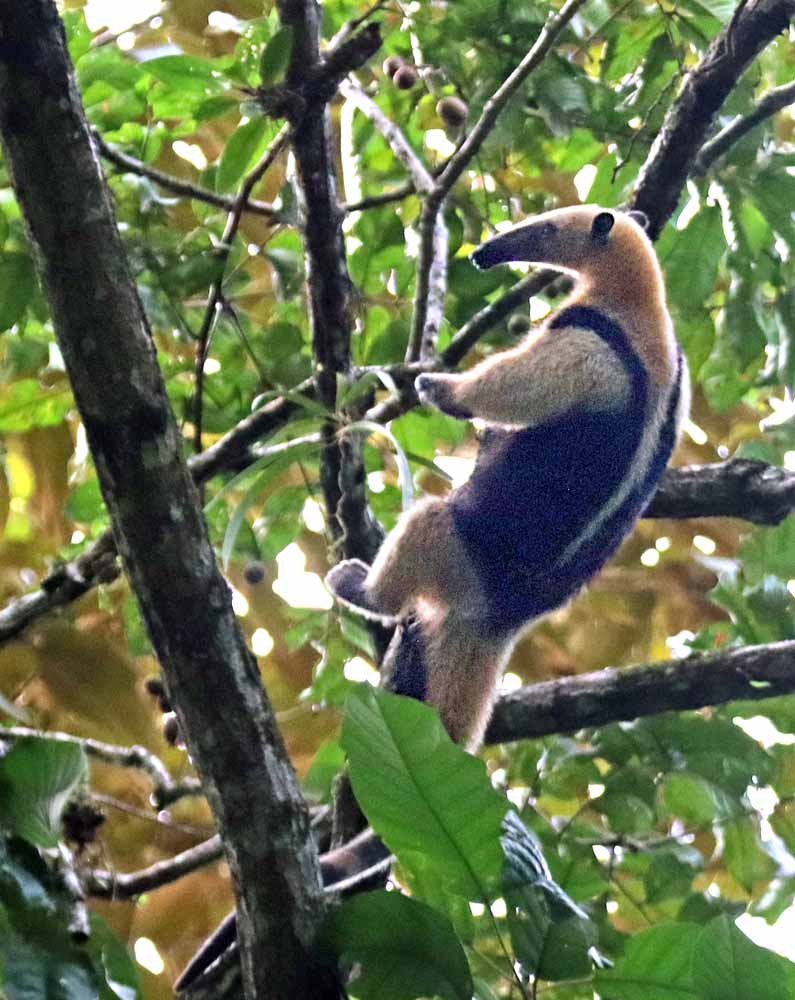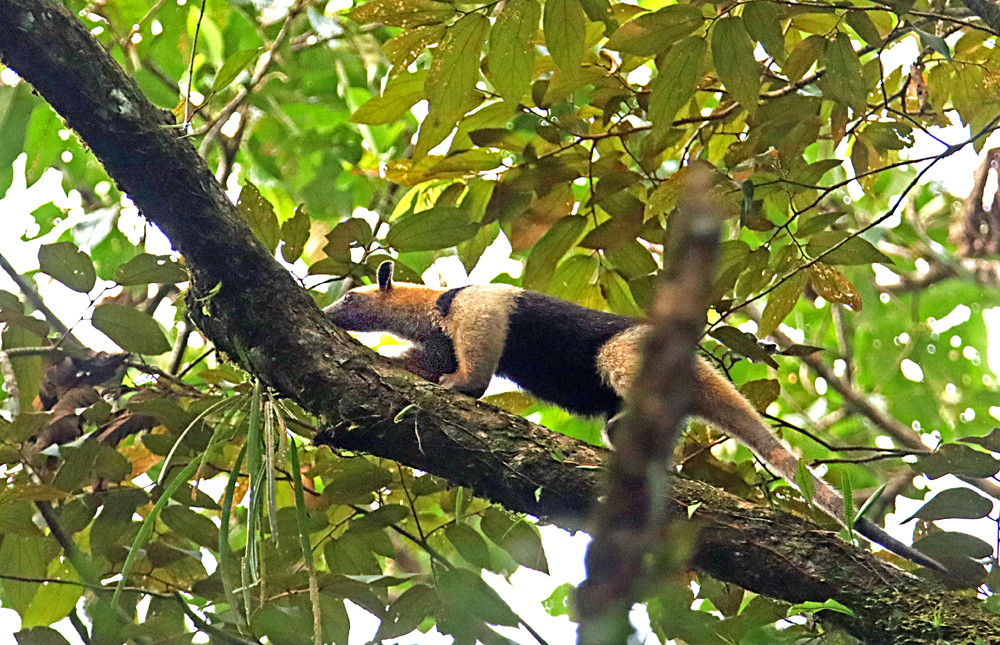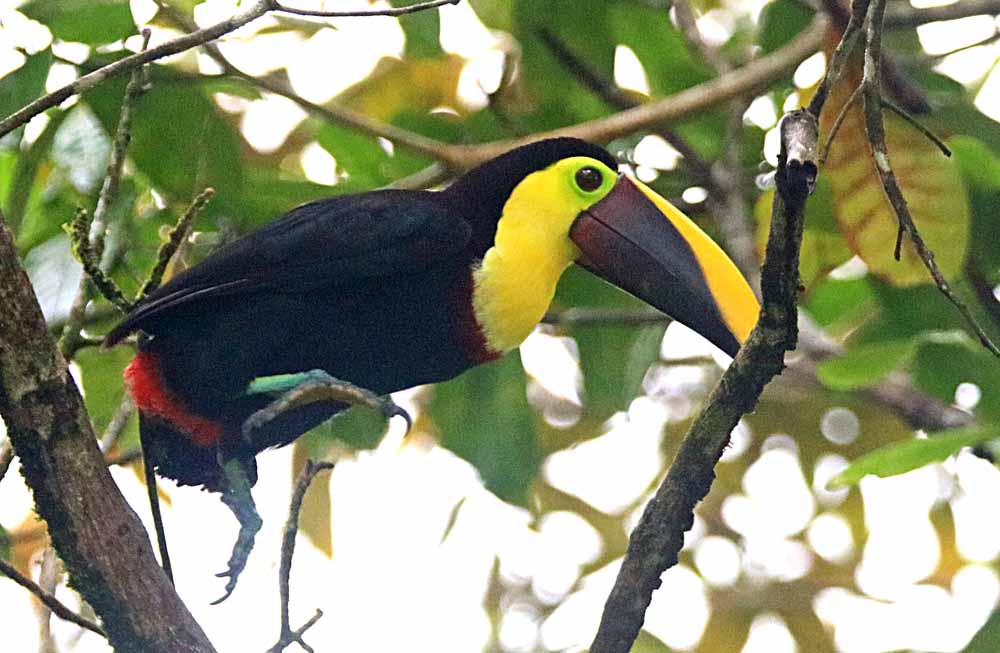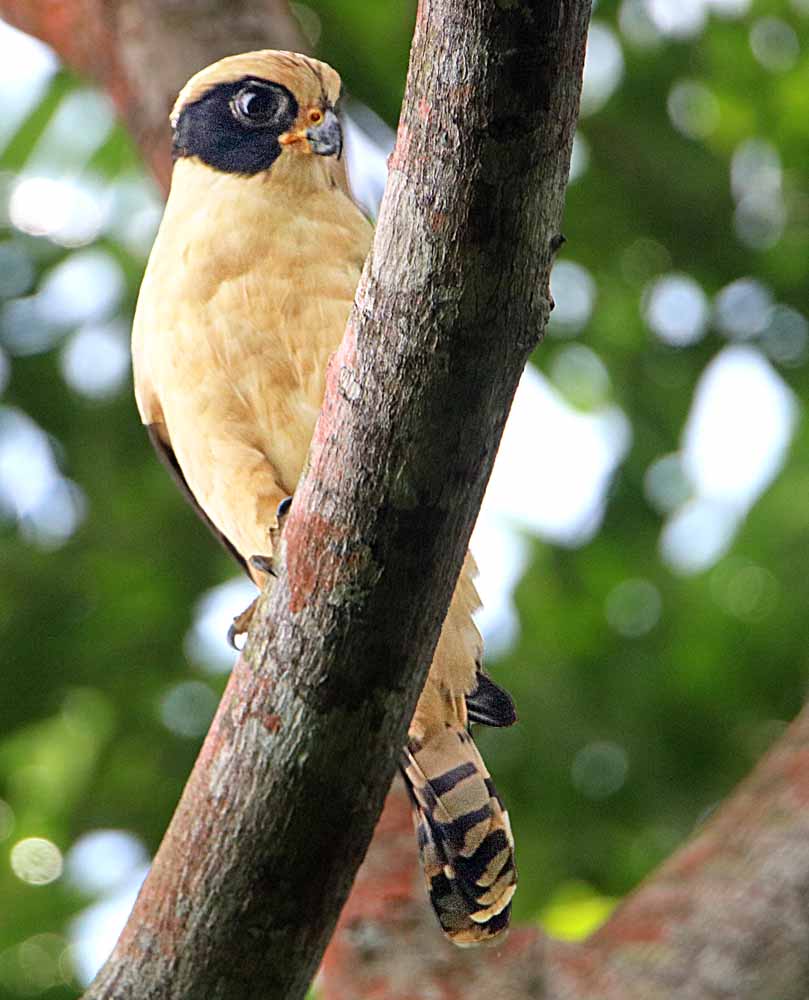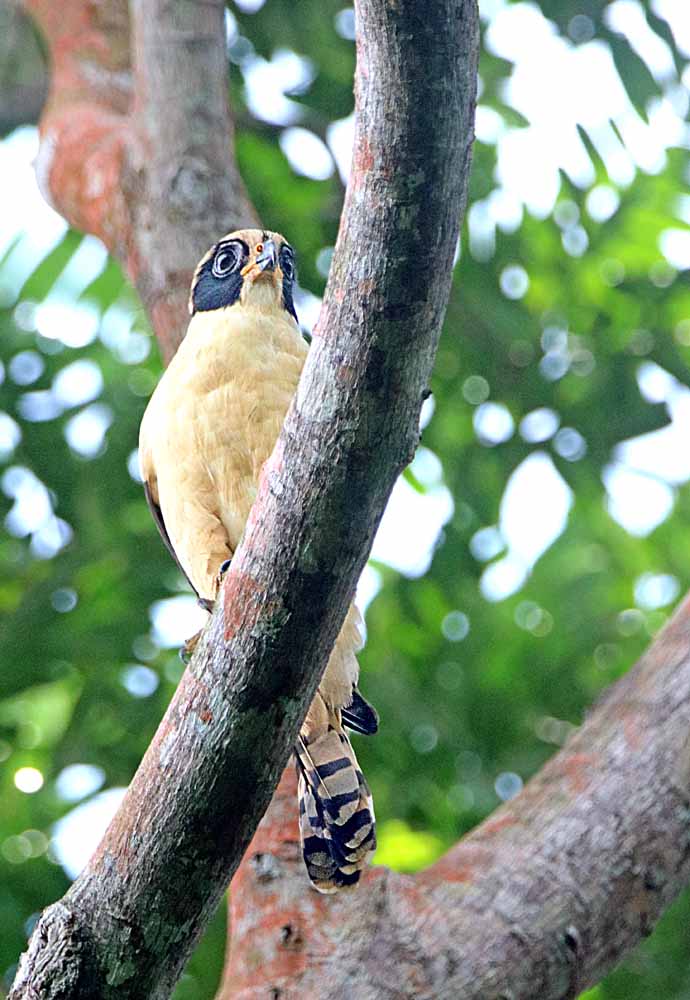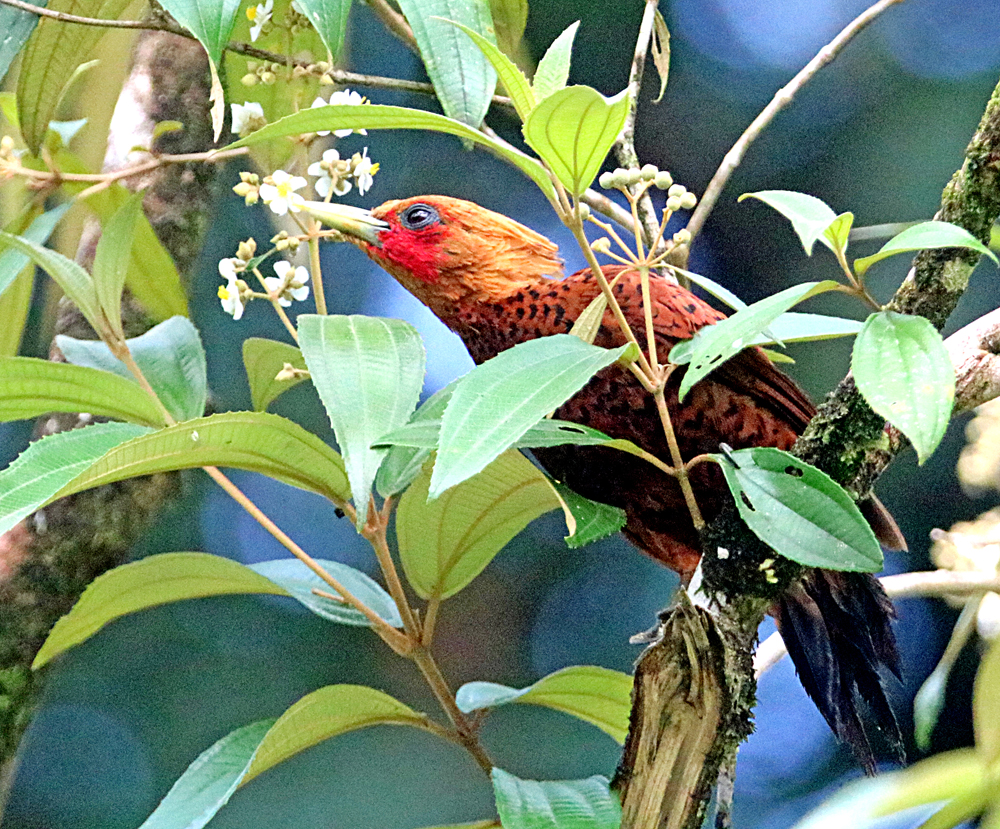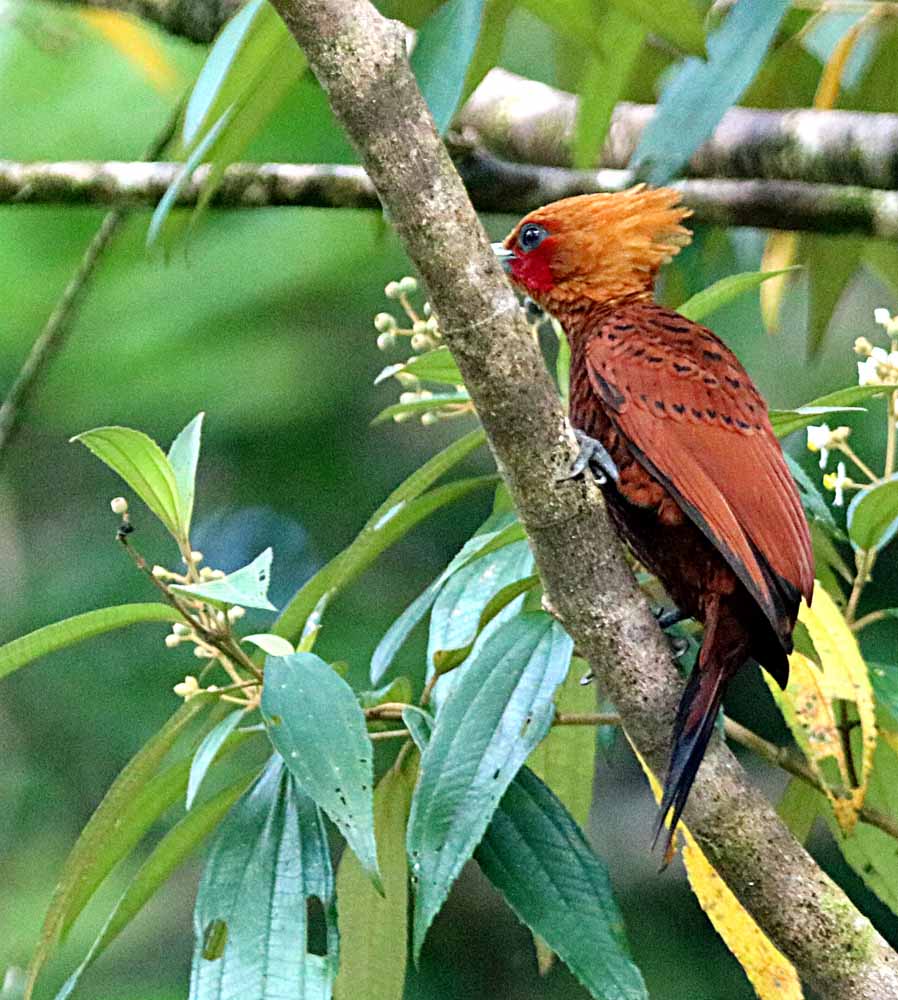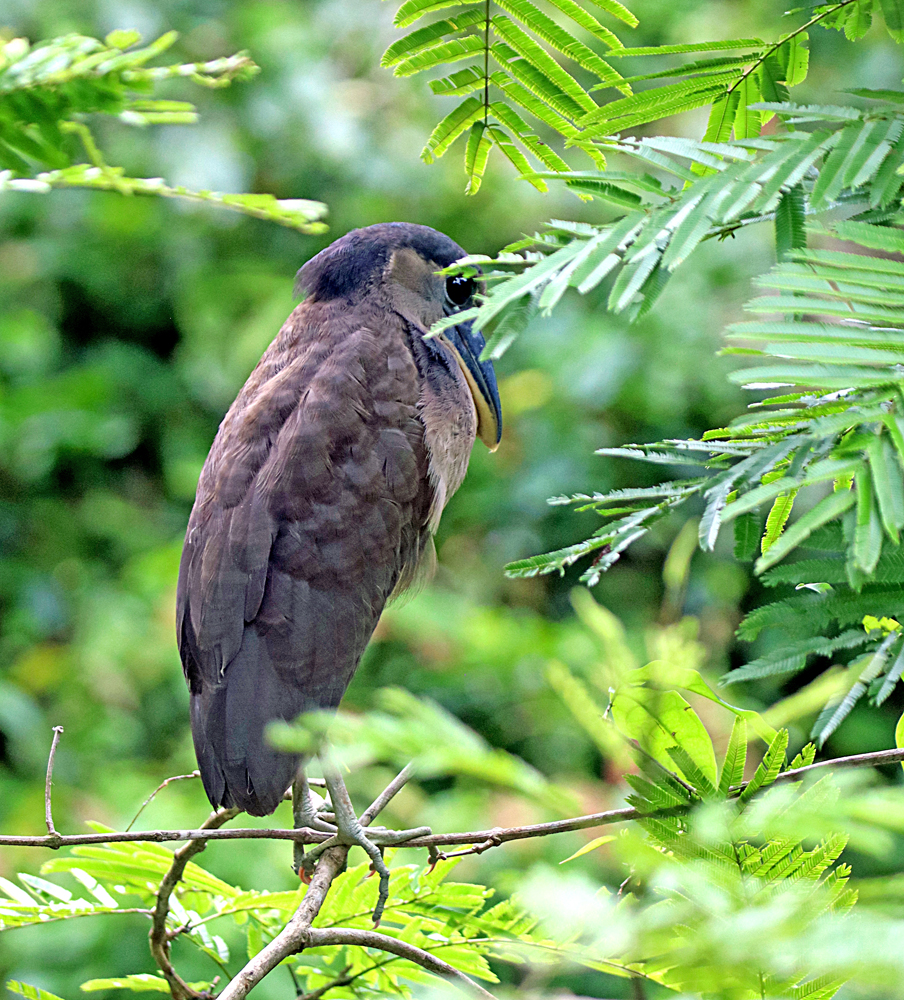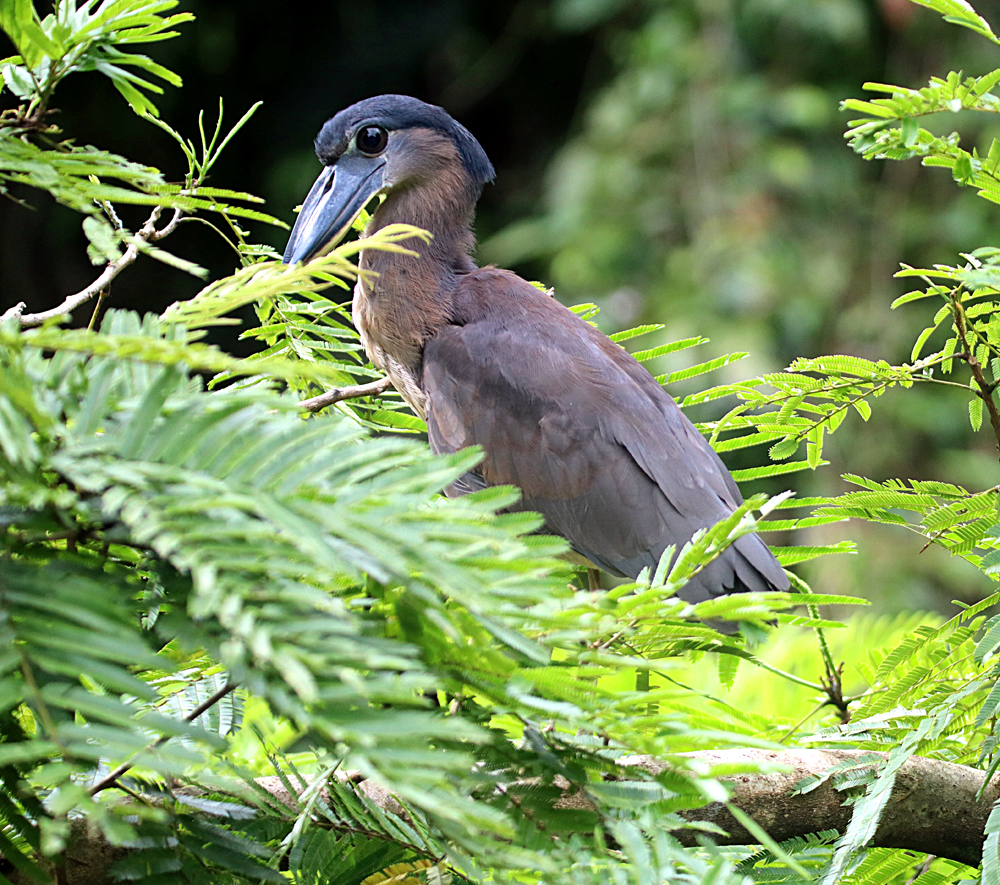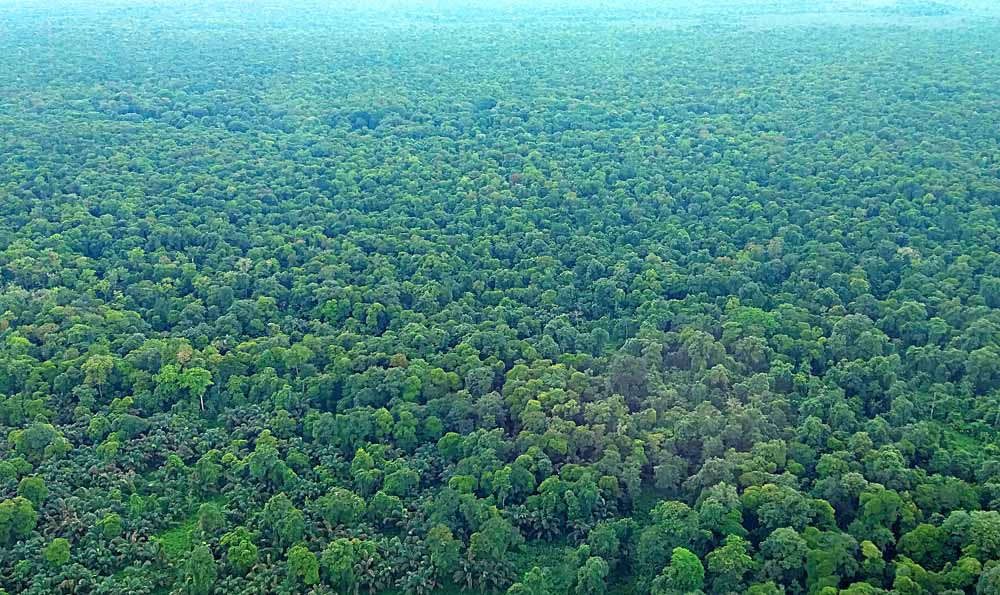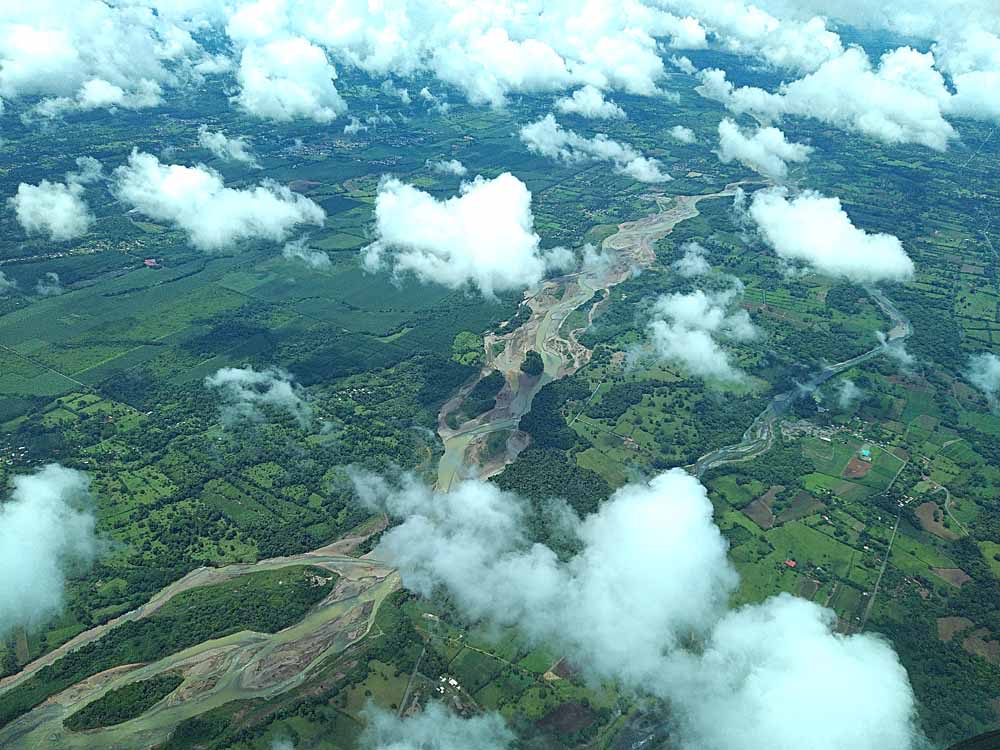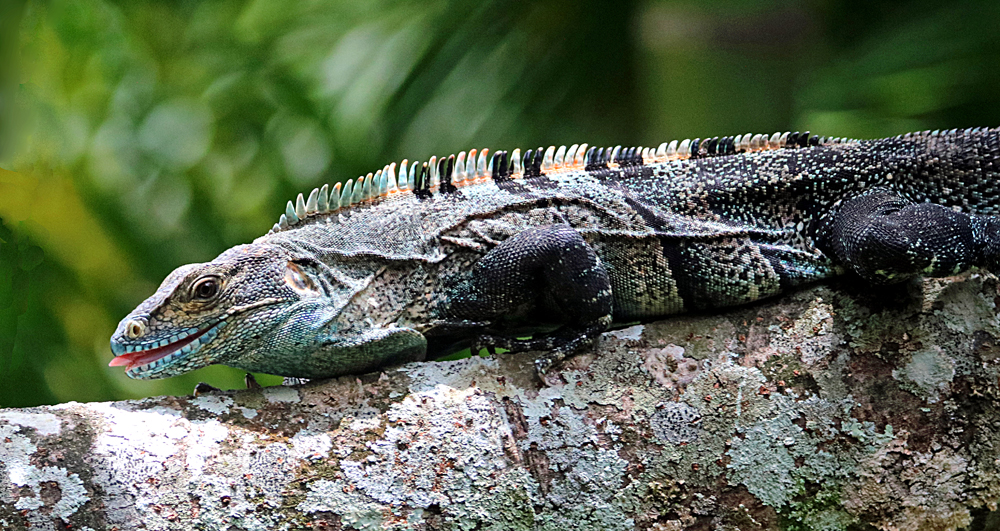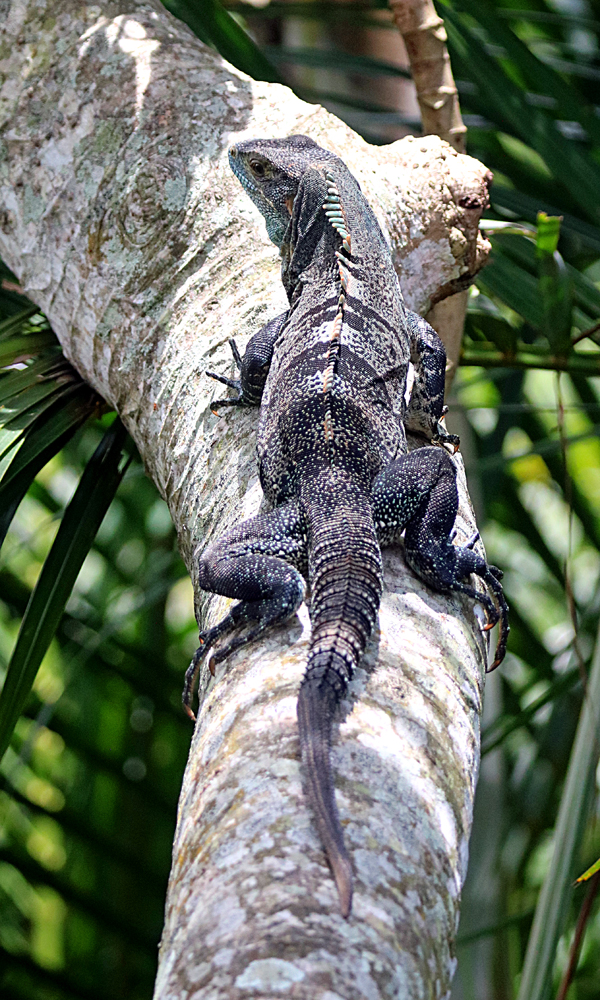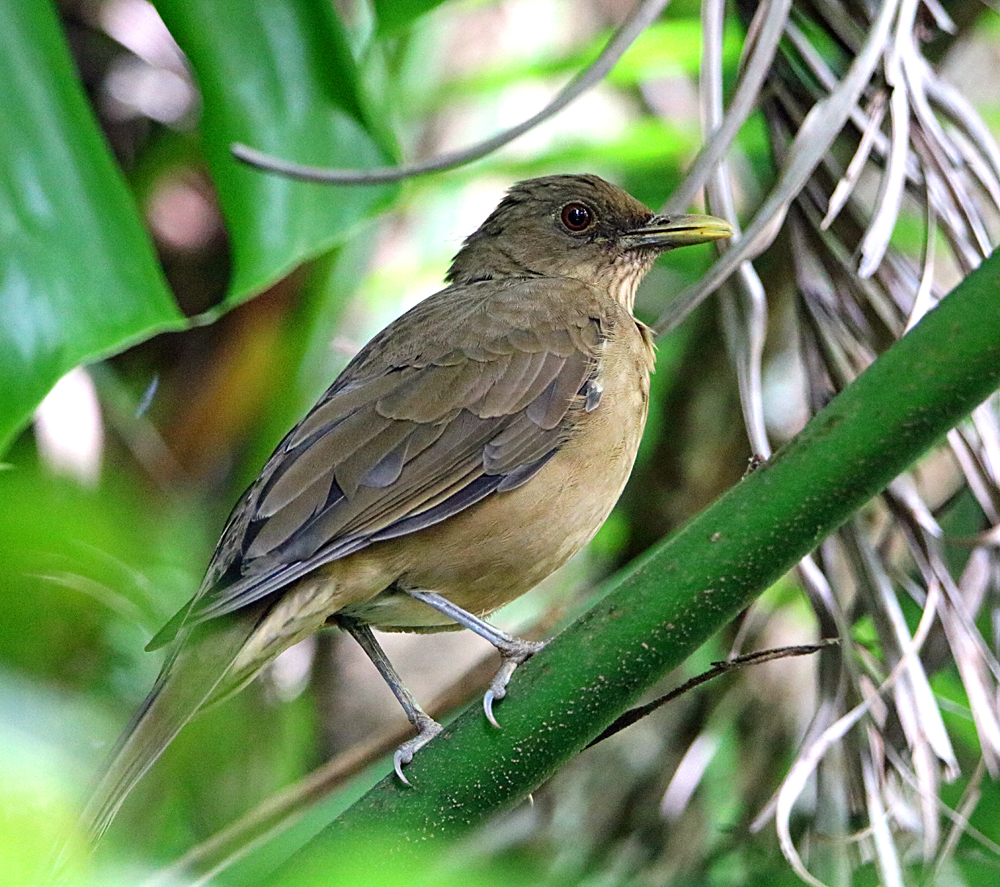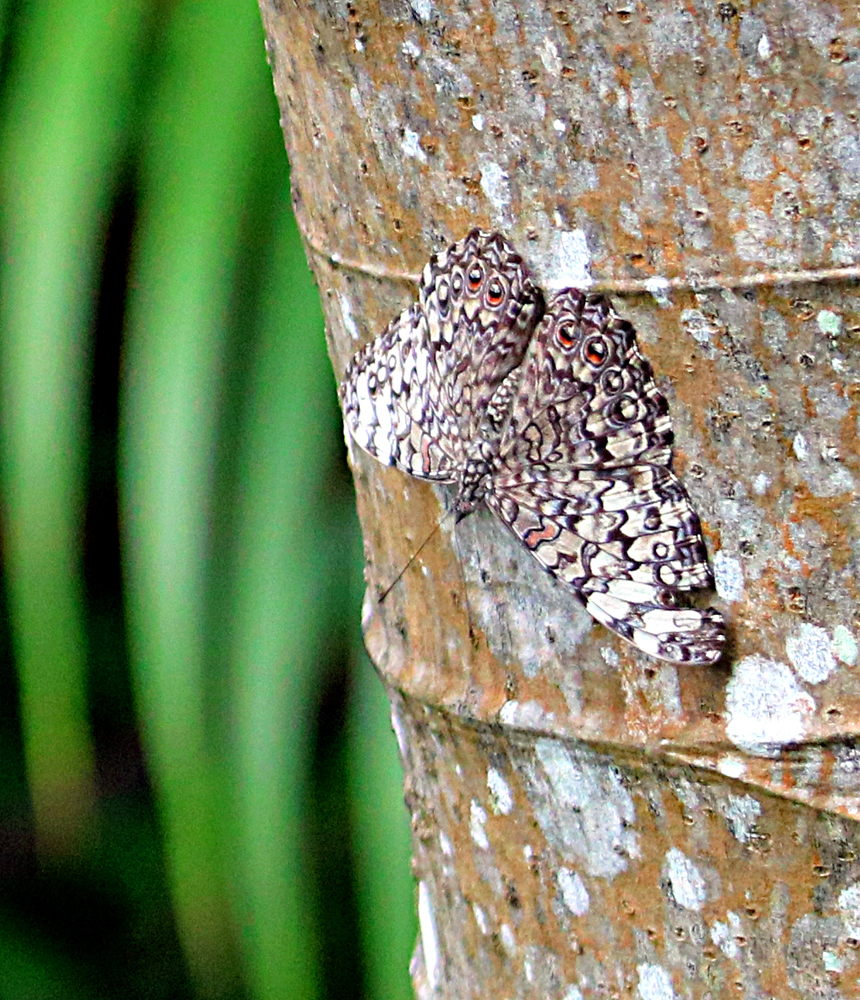One of the many interesting things seen on my Jaguar Trail hike (Tortuguero) was a Northern Tamandua, a type of anteater. He was high in the many dark shady trees and thus very difficult to photograph, but here are 3 photographs that give you an idea of this larger than monkeys but smaller than an adult man, looking like he is wearing black coveralls or vest or suspenders! 🙂 You can see the few other photos I’ve made in other parts of Costa Rica of this interesting mammal in my gallery: Anteater, Northern Tamandua, Tamandua mexicana. This one lives throughout Central America from Southern Mexico to the northern edges of the Andes, though there is also another, larger, species of anteater in South America called “Giant Anteater.” Here’s 3 photos made on one of my hikes in Tortuguero National Park a week or so ago . . .
